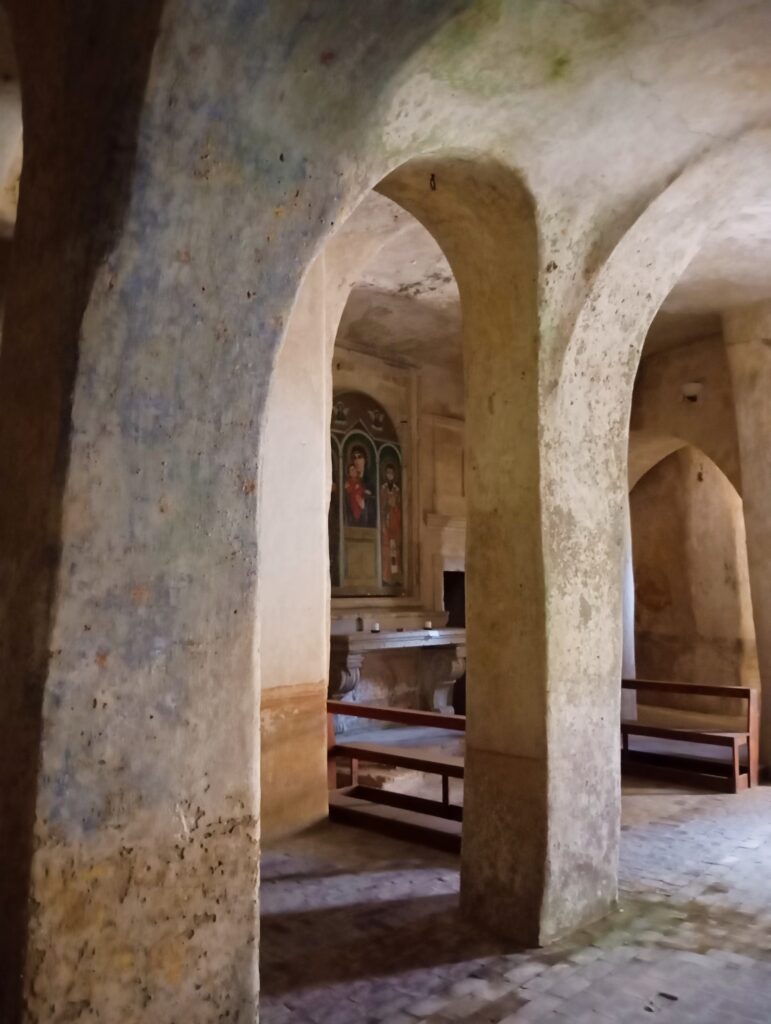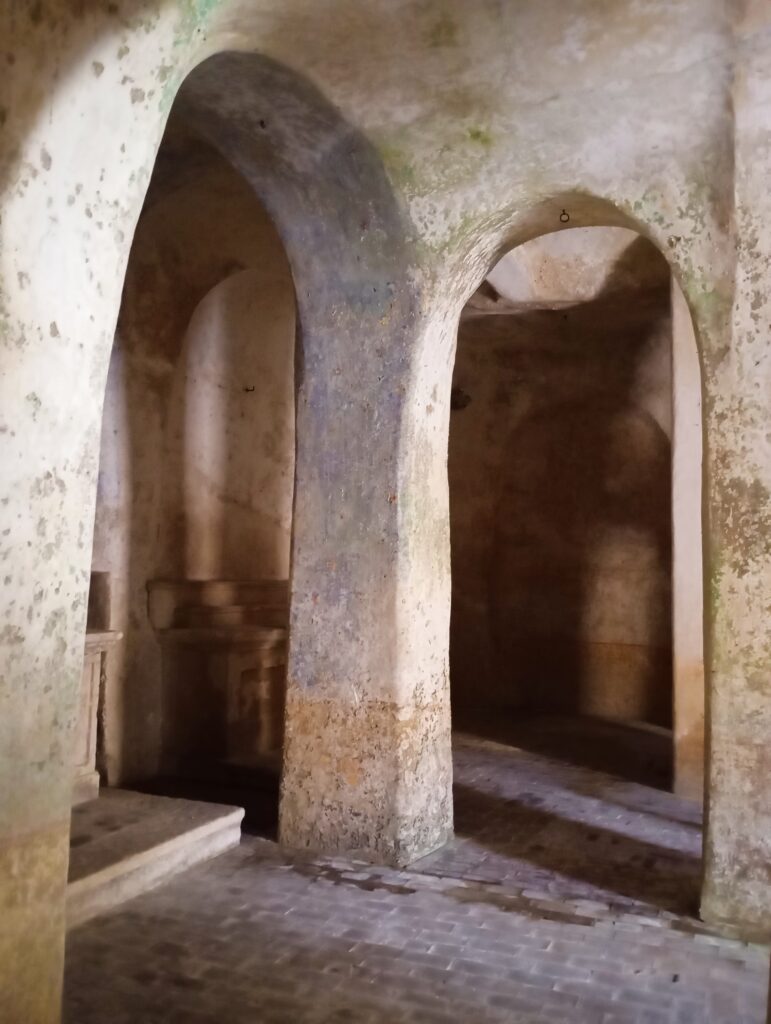CHIESA RUPESTRE DI SAN BASILIO
We are in the Piaggio district of Gravina in Puglia, an ancient medieval neighbourhood deeply connected to the city’s rock-cut history. The rupestrian church of San Basilio, located in the Lama Chiascio area (today known as Piaggio), dates back to the period of the spread of Christianity in Gravina and, as its name suggests, was originally likely dedicated to the Orthodox rite. This church is unique for being entirely excavated in the tuff rock and featuring as many as four naves. Originally, it must have appeared much more austere, without plaster and probably decorated with a few frescoes. The arrangement of the altars is rather confusing, making it difficult to determine which one was the main altar. The first written record of San Basilio dates back to 1569, when Bishop Bosio ordered the repair of several churches in the area; it is from this period that the three altars facing north date. The fourth altar, facing east — symbolically towards the rising Christ — was built in 1714 by the future Pope Benedict XIII, in an apse where an earlier altar probably already existed. For centuries, the rupestrian church of San Basilio was an important place of worship and spiritual gathering for the inhabitants of the Piaggio district. However, in the early 20th century, partly due to the social unrest linked to the rise of the communist movement in the neighbourhood, the church was closed and deconsecrated, falling into oblivion among both locals and scholars of rock-cut architecture. The only remaining visible trace was a small tuff bell tower, which can still be seen today in its simple structure. Only recently has the history of the church been rediscovered. Today, the hypogeum belongs to the Marchetti family, who have owned the house above it since 1788.

The Piaggio district was not only a place of worship but also a neighborhood inhabited by around 2,000 people living in extreme poverty. The district was known for its rock-hewn dwellings, where entire families were crammed into caves. In 1945, a report from the newspaper “La Voce” of Naples described the precarious lives of Piaggio’s residents, who were still living in caves as if in pre-Roman times. The houses were huddled closely together, with roofs made of tiles and tin sheets that provided protection from the sun and rain. Most caves housed entire families, often large ones, in cramped, poorly lit spaces. The doors to the caves also served as the only ventilation points, and the air inside was often filled with foul odors. The interior of the caves was furnished with only a few essential items, such as a chest of drawers, a double bed, and a few sacks. When there were too many children, straw was laid on the floor, covered with a blanket to serve as their bedding.

Water did not reach the Piaggio district directly, and it had to be carried by hand, most often by women. Men, on the other hand, would climb the district’s slope to carry the dead to the cemetery. Despite the hardships, the inhabitants of Piaggio considered themselves free. They were almost all communists and preferred to gather wild fruits, often at night, to sell them at the market. The residents of the district held onto the hope that one day a more emancipated society would free their children from the damp caves, granting them a more dignified and free life. Thus, Piaggio was a district rich in history, but marked by deep social inequalities. The rock-hewn churches, such as San Basilio, bear witness to a past filled with faith and spirituality, while the caves inhabited by the poorest residents tell a story of struggle and resilience. Today, with the rediscovery of places like the Church of San Basilio, efforts are being made to bring this complex legacy to light, restoring dignity to a district that for too long has been forgotten in the collective memory of Gravina.
